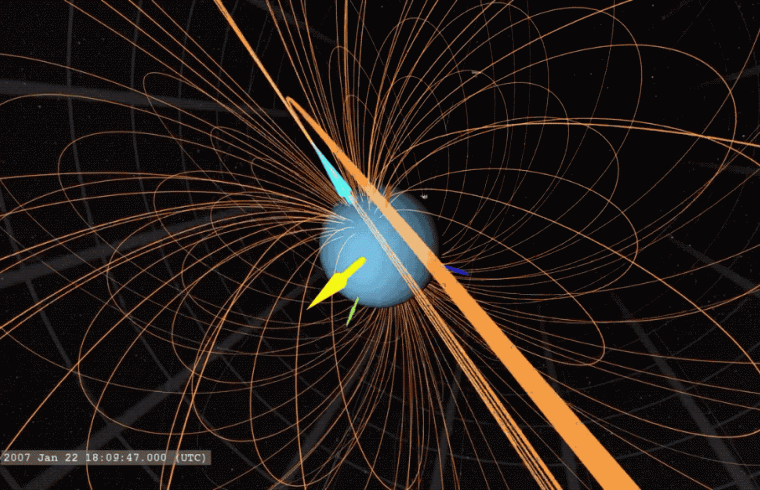Voyager 2 is a space probe launched by NASA on August 20, 1977, to study the outer planets within the Solar System. One of the planets that was studied by Voyager 2 was Uranus in 1986.
Three decades after the mission on Uranus, scientists reinspecting the data collected by the probe, found a secret. While analyzing, they discovered that the probe flew through a plasmoid, a giant magnetic bubble that may have been whisking Uranus’s atmosphere out to space.
This raises questions about whether the planet has a one-of-a-kind magnetic environment.
According to scientists, magnetic fields in planets can protect them, defending the atmosphere-stripping blasts of the solar wind. But they can also create opportunities for an escape like the giant globs cut loose from Saturn and Jupiter when magnetic field lines become tangled.
In both cases, to understand how the atmosphere changes in planets, scientists pay close attention to magnetism.
This is yet another reason that Uranus is mysterious. The planet is magnetically weird.
Scientists downloaded Voyager 2’s magnetometer readings. They plotted a new data point every 1.92 seconds. Smooth lines gave way to jagged spikes and dips. And that’s when they saw it: a tiny zigzag with a big story.

Credits: NASA/Scientific Visualization Studio/Tom Bridgman
They found a plasmoid that occupied a mere 60 seconds of Voyager 2’s 45-hour-long flight by Uranus. It appeared as a quick up-down blip in the magnetometer data. But, if plotting it in 3D, it would appear as a cylinder.
Scientists compared their results to plasmoids observed at Jupiter, Saturn and Mercury, they gauged that the cylindrical shape was at least 127,000 miles (204,000 kilometers) long, and up to roughly 250,000 miles (400,000 kilometers) across.
Moreover, the plasmoid had smooth, closed magnetic loops that typically formed as a spinning planet flings bits of its atmosphere to space.
According to scientists, the findings help focus on new questions about the planet. The remaining mystery is part of the draw.
Journal Reference:
- Voyager 2 constraints on plasmoid‐based transport at Uranus. DOI: 10.1029/2019GL083909












